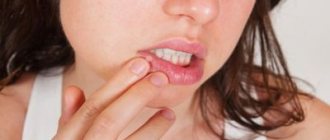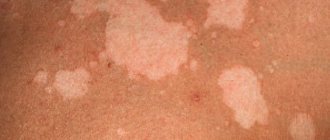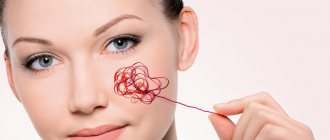The mechanism of the problem
The health of dental units is ensured by a number of substances: these are vitamins A, C, E, D, group B, potassium, iron, iodine, magnesium, zinc and others. But the two main elements necessary to maintain the functionality of the jaw are calcium and fluoride.
Due to injury, work in a toxic industry, insufficient hygiene, or the accumulation of pathogenic bacteria on the surface of the enamel, it can lose useful compounds, which is why white spots, dots or stripes appear on the teeth (we will consider the result with a photo below).
How to remove white spots on teeth?
It is impossible to treat the manifestations of a disease well without knowing what exactly causes them. Methods for dealing with stains directly depend on the cause that caused them:
- If you have fluorosis, you will need to change your drinking water, exclude fluoride-containing foods (legumes, sea fish, spinach) from your menu, and select hygiene products that do not contain this element. This will help prevent further destruction of the enamel, but aesthetic restoration will help cope with the existing one.
- In case of hypoplasia, it will be necessary not only to correct the diet, but also to coat the teeth with special remineralizing and protective compounds. In particularly difficult situations, restoration of damaged enamel cannot be avoided.
- In case of caries, remineralization is carried out; according to indications, removal of the infected area of enamel and microfilling are performed. Treatment of caries in the white spot stage is the simplest, easiest and most comfortable for the patient, so it is very advisable to contact a dentist at this stage.
As Svetlana Leonidovna Kuzmina, a dentist at the 32 Dent clinic, notes, “if you notice a white spot on your teeth that does not disappear for several days, it is better to immediately consult a specialist in order to promptly identify and eliminate the cause that caused the pathology, “Only a dentist can make an accurate diagnosis and prescribe adequate treatment.”
What does the pathology look like?
Initially, a very small speck is detected, which is difficult to notice with the naked eye. Over time, the focus of demineralization increases. The affected areas lose their natural shine because the crystalline structure of the substance covering the dentin is destroyed: it becomes porous, darkens and, due to a change in texture, turns into a reservoir for pathogenic microorganisms. At first, such microdestructions are painless, which indicates the need for visual control.
Most often, canines and incisors are affected, but sometimes pathology occurs on molars. It is important to notice it in time - the process is reversible with early diagnosis. If it is neglected, only radical methods of treatment will help (drilling, installing a large filling).
Causes of problems in adults
White spots on tooth enamel can have different etiologies. To make an accurate diagnosis, the doctor examines and interviews the patient: he clarifies how oral care is carried out, whether there were injuries or other prerequisites for the appearance of foci of remineralization.
Initial caries
Whitish matte formations may indicate that the pathological process has begun and will soon make itself felt. The main reason for its development is poor hygiene (a person brushes his or her teeth irregularly, not thoroughly enough, or does not floss). The disease can also be caused by an excess of carbohydrate foods in the diet, especially fast carbohydrates (white bread, sweets). The resulting plaque becomes a breeding ground for bacteria and a good “future reserve” for the formation of caries.
If you start therapy at this stage, you can get by with non-invasive procedures, but the neglected process will lead to the destruction of dentin and, as a consequence, to pulpitis (a diagram of pulp damage can be seen in the illustration).
Traumatic impact
It is not so easy to injure the jaw in everyday life, but there is an exception: often the cause of white spots and stains on the teeth is wearing braces and splints. After removal of the orthodontic structure, foci of demineralization are found on the enamel surface; their occurrence could be avoided by observing dietary restrictions and hygiene.
The root cause of lesions under braces is the accumulation of food debris (especially acidic and carbohydrate-rich foods). This is why doctors advise regularly using an irrigator after installing jaw retainers. The surface areas under the locks are poorly moistened with saliva, which aggravates the situation.
Patients who have not been treated by an orthodontist also have white spots on their teeth. They are associated with a constant load:
- frequent consumption of seeds, nuts and other solid foods;
- bruxism (involuntary clenching of the jaws both during sleep and while awake).
Athletes involved in contact martial arts are also at risk.
Industrial or occupational fluorosis
He can be:
- streaked or spotted (mild form);
- chalky-mottled (moderate severity);
- erosive and destructive (severe course of the disease).
It occurs due to excess fluoride in the patient’s body and also leads to the appearance of chalky or transparent spots, specks and stripes on the teeth. The disease manifests itself in people who have worked for a long time in industries with high fluoride concentrations:
- glass, ceramic, cement;
- woodworking;
- oil producing
Workers of hazardous enterprises are recommended to regularly visit the dentist to identify pathology in the early stages and undergo timely treatment.
Hypoplasia
Many dental diseases in an already born baby are a consequence of the incorrect lifestyle of the expectant mother, lack of vitamins, and poor ecology.
White spots on a child’s baby (less often permanent) teeth often occur due to underdevelopment of the enamel. The foundation for its formation in children is laid during the period of intrauterine development - at the 7th week of pregnancy. Permanent incisors and molars are formed from 5 months to 7–8 years.
The most popular prerequisites for the spread of pathology:
- hypovitaminosis D in the mother;
- toxicosis;
- transferred rubella;
- frequent inflammation of the gastrointestinal tract;
- birth injury.
The problem cannot be prevented with a 100% guarantee, but you can make every effort to reduce the likelihood of its occurrence.
Methods of treating the disease of the chosen ones
Is there a method today that guarantees a 100% recovery? We asked Tatyana Sukhova, a dermatologist,
highest category of Moscow clinic.
Cuban doctors have achieved the best results in treating the disease. The method involves administering intramuscular injections of vitamins into depigmented areas. But even he cannot cope with the disease completely. Vitiligo treatment at the Dead Sea is now being actively advertised. Israeli doctors were able to obtain pigment on a white spot, but this, alas, does not always look beautiful and, again, does not guarantee complete healing. In our country, the most effective method in the treatment of vitiligo is considered to be a combination of UV and PUVA therapy with the use of photosensitizing drugs. As a result, it is possible to “revive” the white spots, but, unfortunately, it will not be possible to get rid of them completely.
Folk remedies for spots
Among practicing doctors there is also the following opinion: vitiligo is not a disease, but only a cosmetic skin defect. This means that you need to treat it as normal pigmentation, using herbal medicine, as well as masking the spots with regular foundation. If you choose a shade similar in color to a healthy area of skin, then no one will notice vitiligo. Only on condition that this product is approved by a doctor, since many foundations contain microsubstances that affect pigmentation and can enhance the development of the disease.
What diseases cause white spots on teeth to appear in children?
There are several options here:
- Lack of vitamins or minerals - in this case, in addition to visiting the dentist, it is worth visiting the pediatrician to take tests, prescribe medications or adjust the diet.
- Endemic fluorosis - most often occurs in babies living in industrial areas due to excessive saturation of drinking water with fluorides, if the expectant mother works in hazardous industries during pregnancy. In addition to medical intervention, you should, if possible, reconsider your lifestyle and eliminate the use of fluoridating pastes (they are not recommended for children under 4–5 years of age).
- The hypoplasia described above is a common cause of white spots found on dental photographs.
- Hardly started caries is the most common option.
The pathological process, which can develop in an adult for several years, in the case of a child often occurs rapidly and leads first to darkening of the stripes on the enamel, and then to the formation of large carious cavities. If the situation is neglected, the crown will collapse completely, leaving behind only a small black “hole” in place of the element. In addition to physiological reasons, this also occurs due to the difficulty of carrying out hygiene procedures, especially since older relatives often treat the baby with sweets (soda, sweets, fine flour bread). To avoid complications, it is recommended to visit the dentist with your child every 2-3 months.
WHITE SPOT DISEASE
This is due to the fact that in limited areas of the skin the production of melanin, the pigment responsible for the color of skin and hair, stops. Patients do not experience pain, itching or other unpleasant sensations. The relevance of the problem of this disease is associated with a pronounced negative impact on the socio-psychological state of such patients.
In the system of dermatological diseases, vitiligo belongs to the group of skin dyschromia, or more precisely, to hypomelanosis. This pathology is common among 0.5% of the world's population.
In most cases, the development of the disease occurs unnoticed. Sometimes the first symptoms of vitiligo are minor skin itching, tingling, and the appearance of whitish or pinkish spots. Subsequently, these spots increase in size, take on different shapes and sizes, and can be surrounded by skin of normal color or with excess pigmentation. Pigment loss can occur quickly, over a few hours, or slowly, over several months.
Such foci can be separate, multiple, single, or merge with each other. Depigmented spots can be located on any part of the body, but most often on open ones: on the neck, in the mouth or around the eyes, in the area of the limbs.
Correct treatment consists of a thorough examination and individual selection of complex therapy, taking into account the possible causes and mechanisms of development of vitiligo, as well as the presence of concomitant diseases. Unfortunately, modern medicine has not established the exact cause of the appearance of white spots on the skin. But the most substantiated theories of the occurrence and development of vitiligo are genetic, biochemical and autoimmune.
In approximately 15–30% of cases, the disease is hereditary . At the same time, vitiligo is often combined with all kinds of autoimmune diseases: rheumatoid arthritis, psoriasis, thyroid diseases, autoimmune diabetes mellitus, pernicious anemia, systemic lupus erythematosus, Addison's disease.
The biochemical theory is that in the skin of patients with vitiligo, an excess amount of free radicals (epidermal hydrogen peroxide) accumulates against the background of a decrease in the content and activity of the antioxidant enzyme catalase. These processes lead to damage to melanocytes and depigmentation of the skin.
The autoimmune theory suggests two possible options for the development of the disease. The first is the presence of a primary disorder in the immune system, leading to its errors and the body’s production of antibodies to melanin, melanocytes and tyrosinase (an enzyme that catalyzes the reaction of converting tyrosine into melanin). The second option is damage to melanocytes or their degeneration under the influence of unfavorable factors, which causes the formation of pathological elements to which antibodies are produced. This theory contains many contradictions. But the positive effect of using drugs that suppress immune reactions indicates the participation of the immune system in the mechanisms of the disease.
The diagnosis of vitiligo is made based on the clinical picture and in most cases does not cause difficulties. This is due to the characteristic clinical manifestations of the disease.
If necessary, examination for vitiligo may include consultation with an endocrinologist, testing for antibodies to thyroglobulin; TSH and other studies, if necessary to assess thyroid function or conduct a differentiated diagnosis; additional immunological examination if there is a high risk of other autoimmune diseases. Skin biopsy is rarely performed. Microscopy of a sample from patients with vitiligo reveals a complete or partial absence of melanocytes, altered collagen fibers, and a large number of melanosomes in the rim surrounding the lesion.
Treatment of vitiligo is aimed at curbing the progression of the disease, reducing its cosmetic manifestations and restoring melanin production. Today, vitiligo is increasingly spoken of as a multifactorial disease, which necessitates an integrated approach to its treatment.
Treatment must begin with a series of therapeutic measures. This is, first of all, consultation with a dermatologist. It is also advisable to consult a psychologist, since the patient essentially needs to learn to live with this disease.
The psychosomatic status of the patient and concomitant autoimmune diseases are determined. The prognostic criteria for the effectiveness of therapy are assessed: the duration of the disease, its clinical form, stability over the last 6 months, and the effectiveness of previous treatment.
Vitiligo is a difficult problem for dermatologists due to the lack of a clear treatment plan. A peculiarity of patient treatment is that many methods have off-label status[1]. Therefore, it is important to explain to patients all existing treatment methods, cut out unnecessary ones and protect them from unnecessary costs.
There are two fundamentally opposing methods of treating vitiligo, aimed at creating the same type of skin pigmentation. The essence of the first method is to bleach small, normally pigmented areas of skin located against the background of continuous depigmentation. The second method is more common and is aimed at enhancing the formation of pigment or using various cosmetics to mask skin color defects. This treatment method can be carried out either surgically or non-surgically.
Conservative treatment of vitiligo includes several areas. First of all, this is treatment with topical corticosteroids of moderate strength ( mometasone furoate and methylprednisolone aceponate ). They are off-label drugs and are prescribed for an average of 6–8 weeks.
Calcineurin inhibitors (local immunomodulators) also have off-label status and are prescribed for 10–18 weeks. Both topical corticosteroids and calcineurin inhibitors are most effective when combined with phototherapy.
You can also prescribe therapy with calcipotriol (the effectiveness of its use increases in combination with phototherapy and excimer laser), 5-fluorouracil, 10% L-phenylalanine . But these drugs are best used in the preclinical or initial clinical stages, i.e. their effectiveness in the treatment of vitiligo is not very high.
Phototherapy methods for vitiligo are a priority because they are most effective. It is best to use narrowband mid-wave UVB therapy (311 nm), spectrum phototherapy (SPT) and PUVA therapy. Irradiation is carried out using a general (over the whole body) or local method, when the effect is directed to the affected areas. The PUVA therapy method involves taking internally or externally photosensitizing agents that improve the perception of ultraviolet radiation - psoralen, psoberan , etc. After this, after a few hours, local or general UV irradiation is carried out. However, it must be remembered that PUVA therapy carries a fairly high potential risk of developing skin cancer. Therefore, all over the world the qualification for the number of such procedures has been significantly reduced. And PUVA therapy must be prescribed with great caution.
When using an excimer laser, the effectiveness of treatment also increases significantly. Laser therapy improves metabolic processes in the skin and promotes the production of enzymes responsible for the formation of melanin.
Systemic therapy for vitiligo is prescribed when the disease progresses rapidly and local treatment is ineffective for 6 months. It consists of pulse therapy[2] with systemic corticosteroids, for example, dexamethasone (5–7.5–10 mg 2 days a week in a row for 1.5–3 to 6 months). This is a fairly safe regimen that can be used for a long time and is indicated only for the progressive stage of vitiligo, when it is necessary to stop the depigmentation process.
If conservative treatment of vitiligo does not give the desired result, surgical intervention . There are several indications for surgical treatment of vitiligo: if the lesions are located in open areas of the body, are a significant cosmetic defect and violate the psychological status of the patient; for 12 months there is no result from local and systemic therapy; the disease is in remission; for one to two years, new spots do not appear, and existing ones do not grow.
Surgical treatment of vitiligo consists of epidermal transplantation using finely perforated grafts. Also in recent years, with the development of microsurgery, the transfer of pure melanocyte cultures or mixed epidermal cultures to the prepared area has become increasingly used.
Another, fundamentally different, method of treating vitiligo is to whiten normally pigmented skin . It is used when the patient's depigmented lesions occupy large areas of the body and it is not possible to cause their repigmentation. In such cases, to color the patient’s skin in one tone, small areas of normal skin are bleached (depigmented) using 20% hydroquinone ointment .
The main class of drugs for vitiligo are various concealers, dermatocosmetics, and sunscreens. Cosmetics help make the manifestations of the disease less noticeable. Today, dermatocosmetological products have been developed that allow you to even swim and sunbathe without fear.
It is very important to consider the clinical stages of vitiligo when choosing treatment methods. The preclinical stage is characterized by a deficiency of melanocyte growth factor in the system. It is unknown where the next outbreaks will appear. In this case, as the disease progresses, it makes sense to prescribe systemic therapy that can stop the pathological process. At this stage the disease is reversible.
At the initial stage, possibly reversible, there is a decrease in the amount of melanin in melanocytes. Here the success rate of therapeutic interventions is approximately 50%.
At a late stage, which is considered almost irreversible, melanocytes are destroyed. In this case, so-called cellular technologies can help, or, if the process is widespread, it is preferable to get rid of single areas of pigmentation.
Modern drugs and treatment methods make it possible to slow down or stop the developing process to a certain extent. But it is possible to achieve restoration of pigmentation only in some patients and mainly in the early stages of the disease[3]. Currently, the search for effective methods of treating this disease continues.
Almost all experts agree that vitiligo does not affect the general condition of the body in any way and is a concern only for aesthetic reasons. And some doctors are even inclined to believe that vitiligo is not a disease, but a cosmetic defect.
But while vitiligo is not medically dangerous, the appearance of white patches on the skin can have a negative impact on a person's emotional and psychological health and sense of self-worth. That is why the psychological aspect of vitiligo treatment is so important.
White spot disease also affects famous people. And some even manage to turn the disease into a plus.
Michael Jackson has repeatedly stated that his skin became light not because of plastic surgery, but as a result of vitiligo. The King of Pop took the path of bleaching the areas of remaining pigmentation.
Here is another example - Winnie Harlow - the first and so far the only model in the world with vitiligo, winning not only the world catwalk, but also the hearts of millions of fans around the world. She is proud that she managed to overcome two barriers : social and psychological - the one that prevents people who are different from others from expressing themselves and achieving success.
Various treatments can minimize, disguise, or in some cases eliminate white spots on the skin. But a lot also depends on your attitude towards your disease. Sometimes your disadvantages can still be turned into a big and fat plus.
Prepared based on materials from the IX International Forum of Dermatovenereologists and Cosmetologists
————- [1] Off-label (English off-label, from off - outside, label - label, instructions) - the use of medicines for indications not approved by government regulators bodies not mentioned in the instructions for use. [2] Pulse therapy is the intravenous administration of ultra-high doses of glucocorticoids for a short period of time. [3] Proper treatment of vitiligo can slow the progression of the disease and cause the lesions to grow back. However, according to some data, 60% of successfully treated patients relapse after some time (months or years).
The occurrence of pathology during the gestational period
Pregnancy is stress for the body and a time during which a woman requires an increased concentration of nutrients in food. The fetus needs minerals and vitamins for the correct formation of all systems and organs, so the expectant mother may experience a deficiency of them. It happens that foci of demineralization occur as a result of toxicosis, when, due to constant nausea, an overly acidic environment is created in the mouth.
If a white spot appears on a pregnant woman’s tooth, this means that it is worth visiting not only a dentist, but also a gynecologist to rule out metabolic disorders and alleviate unpleasant symptoms.
Why do white spots appear on teeth?
“Spotting” of enamel always indicates some kind of violation, and this is always a reason to be wary and go to a doctor for advice. If whitish, chalky spots on your teeth suddenly become noticeable, the reasons for their appearance may be as follows:
- Enamel hypoplasia. A fairly common condition these days, which is underdevelopment of tooth enamel. It usually appears in childhood, therefore, if a child, after a change in bite, has visible white spots on the front teeth (not on one, but on many or even all at once), hypoplasia can be suspected.
- Caries. If a stain has formed on one, less often, two or three teeth at the same time, it may indicate the initial stage of caries. Over time, when microbes multiply and begin to actively destroy dental tissue, such a stain will darken, but at first it may look just white and matte - like a small piece of chalk.
- Fluorosis. Even an element as beneficial for teeth as fluoride, in excess, can become harmful to tooth enamel. If too much fluoride enters the body (for example, through drinking water), it leads to changes in the structure and color of the enamel - this is the condition dentists call fluorosis.
- Lack of calcium, or demineralization of tooth enamel. If there is not enough calcium, the enamel becomes more fragile, dull, and covered with spots, pits and grooves. In this case, all teeth are usually affected, and stains are visible over the entire tooth surface.
Of course, it is impossible to independently determine the specific cause of the appearance of chalky stains on the teeth; here you will need the help of an experienced dentist. And after the doctor makes a diagnosis, it will be possible to cope with the phenomenon itself.
Main symptoms of diseases
The signs of lesions vary, and the prognosis in the absence of timely medical intervention is also different. The final diagnosis should be made only by the attending physician, but the patient can, based on the nature of the pathological process, make an assumption about the root of the problem.
- If the enamel is injured, the person most likely knows about it - he recently removed braces or the jaw was mechanically damaged. Only the area on which pressure was applied or the part of the tissue hidden under the orthodontic structure is treated.
- If a child or adult has white spots on the front teeth (incisors) and molars, the reason is often the development of caries. Such neoplasms are localized randomly, but quickly progress, turn black, and deepen. The focus of the disease is single or few.
- With fluorosis, chalky or pale yellow stripes appear, which later darken.
- Hypoplasia is diagnosed in children and adolescents - and neighboring elements usually suffer.
Vitiligo symptom
This disease came to us from ancient times. In the Middle Ages, it was considered a curse from above, equating it with leprosy. And unfortunate people with spots on their bodies from nowhere (a characteristic symptom of vitiligo) were kicked out of the city or village forever. Subsequently, vitiligo began to be called “the disease of the chosen ones,” since it more often affected people from those strata of society where the choice of a partner was limited to strict limits, such as, for example, among royalty. But, despite various theories of origin, those with white spots on their bodies have always been shunned and feared. And in vain! Vitiligo is absolutely not dangerous either for others or for the patient himself and is never transmitted from person to person. With this disease, colored skin cells - melanocytes - are destroyed, and the pigment that gives our skin its natural color disappears. Because of this, white spots appear on the body. As a rule, at first they are small in size, and over time they begin to grow and merge into a large circle. It happens that the total number of such circles reaches ten or more. They are all oval in shape with a clearly defined border and vary in shades from pinkish to rusty brown. Surprisingly, their skin remains smooth, clean, sensitive and appears absolutely healthy. But the hair in the affected areas becomes discolored and quickly turns gray. Today it is known for certain about vitiligo that the disease can occur at any age, both in men and women. It usually worsens in the spring and at the end of the summer season, especially after a long holiday in hot countries.
What do doctors think about white spots on the skin?
The main question for doctors remains: why do cells stop producing melanocytes? There are several versions. Genetics believe that in half of cases, vitiligo is a hereditary disease, more often occurring in consanguineous marriages. Four years ago, English researchers even discovered the vitiligo gene, which gave hope for the development of new approaches to treating the disease. But besides this theory, there are others that also deserve attention and respect. Immunologists, for example, call vitiligo a “rebellion of the body” and are confident that a failure in the immune system, which occurs for various reasons, leads to increased production of antibodies that kill the producers of melanocytes that secrete the necessary pigment. Dermatologists have their own version. They suggest that depigmentation can be caused by intestinal parasites - helminths and lamblia, which disrupt the intestinal absorption function, which leads to a deficiency of copper and iron in the body. Other causes of the disease include neuropsychic trauma, severe stress, disorders of the thyroid gland and gastrointestinal tract, dysfunction of the adrenal glands and gonads.
How to treat white spots on the skin?
Discussing the causes of vitiligo, doctors agree that it is possible to get rid of the disease without specific treatment, by eliminating the concomitant pathology. For this purpose, new diagnostic methods are being developed. Today, before starting treatment, the patient is referred for examination to an endocrinologist and gastroenterologist and is required to take a blood test. If clinical and laboratory tests reveal liver pathology, treatment is prescribed to improve the function of the liver and gallbladder. If the cause of vitiligo turns out to be a nervous breakdown, the doctor will prescribe vitamin therapy and insist on consulting a psychotherapist. In the case where there are no concomitant diseases, it is useful to undergo complex therapy. Taking vitamins and medications that stimulate the production of melanin pigment is combined with phototherapy (exposure to infrared and ultraviolet radiation on the lesions) and photochemotherapy (irradiation with a helium-neon laser). Some foreign clinics use a method of general skin depigmentation (whitening) using a special cream with hydroquinone or a laser beam. The process stretches out for almost a year, and there is no turning back - the bleached areas remain that way forever. Surgical treatment is also used. Pigment cells from healthy skin are implanted into depigmented areas to stimulate pigment production. The method is expensive, but it provides the most complete restoration of uniform skin color.
Methods of treating pathology for initial caries
Inflammation at the initial stage is treated without the use of a drill and anesthesia: this is a painless manipulation that prevents damage to dentin, and the enamel can be considered healthy after treatment. In some cases, only the doctor at the appointment sees white spots on the teeth, so it is better to carry out these procedures immediately after identifying the problem.
Remineralization
Remotherapy is the process of artificially saturating tissues with micro- and macroelements. It is also indicated after prolonged use of splints or braces.
Calcium gluconate is most commonly used by dentists. A swab soaked in the solution is applied to the previously cleaned and disinfected jaw and left for exposure for several minutes. Sometimes the procedure requires repetition.
To ensure long-lasting results:
- brush your teeth with a soft brush and low-abrasive toothpaste;
- exclude too cold and hot, spicy, sour foods for a day or two.
Fluoridation
There is significantly more calcium in bone tissue than fluoride. But the latter plays a decisive role in the process of absorption of calcium compounds. The best results are obtained by alternating saturation procedures.
The doctor performs the operation manually using gel, varnish or tampons containing the desired element. After manipulation, it is not recommended to use medicinal pastes for 2 months.
Electrophoresis, infiltration, ozonation
These are more complex, but nevertheless non-invasive or micro-invasive processes that allow you to restore enamel that is beginning to decompose without pain relief using:
- microcurrents delivering the necessary substances (electrophoresis with calcium or fluorine ions);
- ICON lamps, thanks to them the desired material penetrates the pores of the surface, restoring the enamel layer (infiltration);
- gas that disinfects the entire dentition, ridding it of pathogens, followed by the use of a material that prevents the development of caries (ozonation).
The attending physician will offer the patient several options to choose from, and the final decision on what to do if white spots appear on the teeth is made jointly.
Sealing and silvering of enamel in children
Fissures are depressions and grooves on the chewing surfaces, thanks to which the jaws can grind food efficiently. Despite their usefulness, with insufficient care they become a source of inflammation and proliferation of microbes, especially in children who, due to their age, do not yet fully observe hygiene. Considering the fragility of the tissues of a child’s body, this leads to almost instantaneous development of caries. Sealing (filling) is done with a material similar to a filling material.
After manipulation, dentists recommend a coating - for example, with silver nitrate, a bactericide, which prevents further destruction of the units and keeps the oral cavity sanitized.
How to disguise white spots on the skin?
White spots on the skin are well masked by fresh rhubarb root juice, which is used to lubricate the spots in the morning and evening. As a result, the white spots turn tan color.
An alcohol tincture of green leaves and pericarp of walnuts, taken in equal parts, is also effective. If you apply it to stains twice a day, they will darken for a long time.
St. John's wort for vitiligo
You can use an infusion of St. John's wort (1 tbsp herb to 1 tbsp boiling water, leave for half an hour). Take 1 tbsp. l. 3 times a day after meals. After three weeks - a week break. And so on for 4-6 months.
At the same time, it is advisable to lubricate the white spots with St. John's wort oil. To prepare it you need to take 1 tbsp. l. herbs, pour 1/2 tbsp. vegetable oil and keep in a water bath for three hours. Then filter and squeeze. St. John's wort increases the skin's sensitivity to ultraviolet radiation, so after the procedure it is recommended to stay in the sun: on the first day - only 1-2 minutes, adding 1-2 minutes every day. The course of treatment is at least a month.
Red pepper tincture
Apply tincture of red capsicum (can be bought at a pharmacy) to white spots 3 times a day for 5-10 minutes. Be prepared for a strong burning sensation. After rubbing, you can spend a few minutes in the sun. Repeat the procedure daily for 2 weeks.
Anise oil
Grind 100 g of anise fruit in a mortar, pour in 0.5 liters of olive oil and leave for a month in a dark place. After this, bring to a boil (but do not boil!), cool and strain. White spots should be constantly lubricated with this oil. In a month or two they will darken significantly and will not be so noticeable.
Therapy and restoration work for hypoplasia
For minor lesions, remineralization can be done; in complex situations, more serious intervention will be required. The problem is rarely localized to the molars and premolars. More often, incisors and canines are underdeveloped. Restoring the enamel in this case is impossible, and the only way out is aesthetic restoration. Depending on the degree of tooth decay, a veneer, crown or filling is placed on it, restoring color and shape.
You will learn in detail how you can restore the beauty of your smile using ceramics from the video:
Preventing the appearance of white spots
If a person is already an adult, it is too late to prevent hypoplasia, but the development of other pathologies can be avoided. To do this you should:
- brush your mouth twice a day, floss after meals, use a medium-hard brush or soft, low-abrasive paste;
- undergo a preventive examination at the dentist 2 times a year, following all recommendations;
- eat well (eat enough vegetables and dairy products);
- in case of confirmed deficiency of nutrients (only in consultation with the doctor), use vitamin and mineral complexes.











